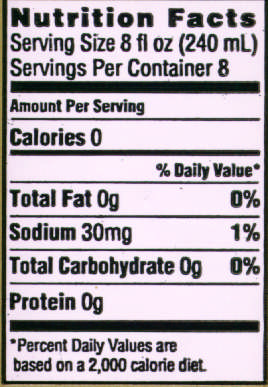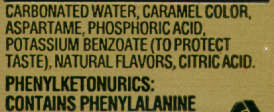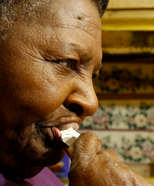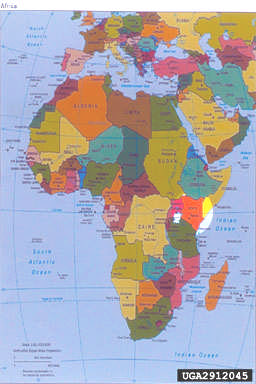ÿþm



Diet Coke
Biocultural Case Studies
Phenylketonuria, Cretinism and
Phenylalanine pathways
Phenylalanine hydroxylase insufficiency causes
phyenlketonuria (PKU)
1. Phenylalanine hydroxylase
Most common genetic abnormality in the U.S.
(1:10,000 overall, about 1:2,500 Europeans)
Growth retardation, mental retardation,
depigmentation of skin, hair
Screened for in infancy and treated by a diet
restricted in phenylalanine intake which causes
Phenylpyruvic acid
some growth retardation
Different screening techniques have different
false positive results
• About 2/3 of positives have classic PKU• New test released in 1998 cuts false
positives from about 1% to about 0.01%
Phenylalanine pathways
Phenylalanine pathways
1. Phenylalanine hydroxylase
Tyrosinase deficiency causes albinism
Can have reproductive implications
including enhanced or reduced fertility
depending on mating preferences.
P-hydroxyphenylpyruvic oxidase deficiency
Homogenistic acid
causes tyrosinosis
Increased levels of circulating tyrosineand tyrosine metabolites
Phenylalanine pathways
Phenylalanine pathways
1. Phenylalanine hydroxylase
Homogenistic acid oxidase deficiencycauses alkaptonuria
5. Many steps
Black urine, deposits in joints likearthritis
Homogenistic acid
Deficient enzyme(s) on this pathwaycauses hereditary cretinism
4. Homogenistic acid
Similar to iodine deficiency disease,but not treatable by diet
Maleylacetoacetic acid
Phenylalanine pathways
Goiter and Cretinism
1. Phenylalanine hydroxylase
Iodine is a necessary constituent of Thyroxin
made in the thyroid gland at the base of theneck by combining iodine with tyrosine
5. Many steps
Thyroxin functions to increase the cellular
rate of carbohydrate metabolism and ofprotein synthesis and breakdown
Phenylpyruvic acid
Homogenistic acid
Deficiency in production of thyroxin can result
in goiter and cretinism
4. Homogenistic acid
Goiter: thyroid hypertrophy
Cretinism occurs in children born to
goiterous mothers
Maleylacetoacetic acid
Musculo-skeletal growth retardation, CNS
impairment frequently deaf-mute
Goiter and Cretinism
Endemic pockets:
Inland and highland settings, Detroit, Peru
Highland New Guinea
Deficiency can by induced by goitrin present
in Cruciferae (e.g., cabbage, rutabagas)
Hypothesized relationship with PTC tasting
since PTC tasters are sensitivephenylthiourea which is present in mostcrucifers
Thiocyanate contained in yams and
cassava also suppresses absorption iodine
Dani Women with Goiters
Cretinism among the Maring
No goiters noticed prior to 1966
1968 survey found 25% goiter rate among
adult females and 24 cretins in apopulation of about 2,000
All cretins less than 8 years old
Focus on change in 1960—non-iodized
trade salt introduced
Traditional salt source contained iodine
but took a lot of work
Injected iodized oil and required all salt
carried into the area to be iodized after1970
Dani Menwith Cretin


What is Geophagia?
• It is a subcategory of Pica
– Eating non-food items
– Pica is derived from the Latin
for magpie, a bird with acatholic appetite
Based on a presentation by
• Geophagia is the practice of
eating dirt or earthen clays
Erica Gibson-Staneland
– Literally geo "earth" phagia
– Clay, laundry starch, and ice
are most commonly craveditems
• Pica/Geophagy is practiced for many reasons
– Response to physiological changes, especially
associated with pregnancy
– Response to obtain needed nutrients
• Dry up salivary secretions, reduce nausea of morning
• Calcium, magnesium, etc.
– Virunga Gorillas are known to eat volcanic soils high in
– Way of seeking attention
• Pregnant women use Pica to seek social support
– Response to hunger
• Where available, clay is free and filling
– Protect body from toxins
– Cultural phenomenon
• Clay minerals bind with plan toxins like glycoalkaloids
rendering them harmless
• Learned practice transmitted primarily from mothers to
Dirt Eating Around The World
Geophagy in Africa
Geophagy has been found around the world.
It appears to have originated in the tropics ofAfrica, and is now found on every continentexcept Antarctica
Slaves brought the custom of dirt eating tothe New World with them, although there issome evidence of geophagy in the NewWorld before European contact
– Aboriginal peoples of the New World mixed
earth with potatoes or acorns to neutralizeglycoalkaloids or tannic acids so that the foodwould be easily digestible
Slave owners were appalled by the dirteating practices of the slaves, and they put
Mouth Lock
mouth locks on them to prevent them fromeating dirt
The slaves tried to commit suicide by eatingdirt so that their bodies would return to theirhomeland



Processing Clay in Ghana
Retail display of clay in Ghana
Samples from Ghanian markets
• Question: Does geophagy
cause iron depletion, or isiron extracted from the soil tosupplement the women's lowiron levels
– 52 women from a pre-natal
– 73% of the women practiced
geophagy, and the medianamount of soil consumed was41.5 g per day
– No significant link to iron
– But locally, geophagy is thought
of as a normal behavior forpregnant women
Clay and Pregnancy in Nigeria
Geophagy Across Africa
Geophagy During Pregnancy and
• The Tiv are one of the few
• Wiley and Katz compared
Dairying in 60 African Populations
groups in the world where
geophagy rates amongpopulations in Africa
men also practice geophagy
practicing dairying and
• The men eat clay as an
– Sixty populations were
• Tiv women are universal
geophagists during their
– Geophagy is more
common in non-dairying
groups except when
– They eat clay throughout their
geophagy is rarely
– In the six dairying groups
• To alleviate morning sickness in the first trimester
that practiced geophagy,
• Then as a nutritional supplement as the pregnancy progresses
three limited women's
(Wiley and Katz, 1998: 535-536)
– The Tiv are a non-dairying population, and women may eat
the clay for extra calcium
Dairying and Geophagy in Africa
Nutrients from Clay
Mineral Supplements?
The Garifuna women of Belize eat clayduring pregnancy to alleviate nausea andto satisfy cravings
Their clay comes in the form of religioustablets that are manufactured inGuatemala
Eating one tablet per day provides women
with 9% of the RDA of calcium and iron,
7% of her magnesium, and 3% of
potassium and zinc
6 of 8 women interviewed ate more thanone bar per day
This form of supplementation iscomparable to Western pharmaceuticalsupplements "One a Days"
Anemia and Clay Eating
A woman buying dirt at a convenience store in Alabama.
• 40 of 152 women in
Mississippi ate clay duringtheir pregnancy
– about 50 g/day– No impact on hematocrits– Conclusion: Women in
Mississippi practicedgeophagy as a result ofcultural transmission retainedfrom Africa, rather than fromnutritional need
• A second study found that
94% of womengeophagists in Mississippihad an inadequate diet
– Response to hunger?
• Geophagy may be an adaptive practice, used by
women whose physiological need for nutrients
Now, the question of the day:
drives them to seek out new substances,especially during pregnancy
Would you eat dirt or clay?
• Women eating clays during pregnancy may do
so for many reasons:
– to prevent morning sickness– provide nutrients– detoxify substances for the mother or fetus– satisfy a psychological craving which imparts a sense
You probably already
Mycotoxins in Food
• Certain molds produce powerful toxins that poison food. A
wide range of diseases result from acute mycotoxicosis
• Long-term effects include reduced fertility, loss of immune
system function, cancer and growth suppression
There's a Fungus Among Us
How common is this?
Certain molds produce powerful toxins that poison food.
Farm animals are the most affected today
• Aflatoxins – acutely toxic and cause
• Prior to agriculture cereals were smal
liver and esophageal cancer, From
– Fungal toxicity would have been extremely
• Tricothecenes –produced by
Fusarium infected cereals
– Causes alimentary toxic aleikiia (ATA),
• Since cereal crop domestication,
yellow rain, hole in the head disease
appears to be regular occurrence
• Penitremes – produced by
– ATA epidemic in the USSR estimated to
have kil ed approximately100,000 people
– Causes Ijesha shakes in Nigerians and
grass staggers in sheep.
between 1942 and 1948
Kenya aflatoxin outbreak
• Aflatoxin in Dog Food caused an
epidemic just last year
• 2004 saw an Aflatoxin outbreak in
– As of July 20, 2004 a total of 317 cases
had been reported with 125 deaths
– 182 (53.2%) of 342 samples of maize
purchased in agricultural markets had >20
• The ergot fungus caused by
species of Claviceps
• Medicinal Uses
– Migraines (ergotamine tartrate)
purpurea), that appears as
– To control bleeding during childbirth (ergometrine)
an infestation on the flowersof many of our cereal crops
– For certain psychiatric conditions
(wheat, barley, oats, and
– To induce labor (since the 1700s)
especially rye), and whose
• Ergotism is poisoning by ergot consumption
toxic substances(mycotoxins) can be passed
– Symptoms include hallucinations (from lysergic
right on through the milling
acid hydroxyethylamide, precursor to LSD)
and baking process to the
– Formication (the feeling of being covered by ants)
final bread product
– Intense pain in extremities due to constriction of
• Mortality can be high (>40%), and victims
who survive experience reduced immuneresponse, blindness, and loss of fertility
• Historically significant as a cause of
• Ergotamine is a strong vasoconstrictor, so
widespread panic, population
powerful as to completely block the flow of
suppression, and extreme religious
blood to parts of the body, creating the
condition known as gangrenous ergotism
– Limbs are particularly susceptible and in its initial
– Demographic depression 1430s – 1480s
stages the extremities can feel as though they are
– The Salem Witch Trials
• This ‘plague of fire' or ‘holy fire' as it was sometimes
– The Panic of 1789
called, could set off whole afflicted communities ininvoluntary dancing movements—the infamous "St.
Vitus's Dance" or "St. Anthony's Fire" of the Middle Ages
Reduced Fertility
Population Index for Perigord
• Rye was a common grain growing in the area
before the Puritans arrived
– There was dissatisfaction with the rye because it
made the animals sick
• Climate was colder than normal with
– Climate in 1691 was conducive to ergot
unusual levels of wetness
• Early rains and warm weather in the spring progressed to
– Reports of witchcraft trials closely fol ow
a hot and wet summer
• 1692 was a drought year, dramatical y reducing ergot
the climate indicators
– Threshing probably took place shortly before
• Ergot Alkaloids also suppress fertility
• Children started showing symptoms in December• By late fal 1692 the crisis abruptly ended
• Rye growing in low, wet ground is most
– Much of the western acreage of Salem Village
susceptible to ergot growth
may have been an area of contamination
• This is substantiated by the pattern of residence of the
– One of the most notorious of the accusing children
accusers, the accused, and the defenders of the accused
in Salem was Thomas Putnam's 12-year-old
• Excluding the afflicted girls, 30 of 32 adult accusers lived
in the western section
– Her mother also showed symptoms
• 12 of the 14 accused witches and 24 of the 29 defenders
– Two other afflicted girls also lived in the Putnam
lived in the eastern section
– The general pattern of residence, in combination
with the well-documented factionalism of the
– Putnam had inherited one of the largest
eastern and western sectors, contributed to the
landholdings in the village
progress of the witchcraft crisis
• His father's will indicates that a large measure of the
land, which was located in the western sector of SalemVillage, consisted of swampy meadows
Parris: Two afflicted girls, the daughter and niece of Samuel Parris, lived
Area A: most of rye was used to
ge. Their exposure
seems plausible that the doctor, like Parris, had Putnam
ble. Two-thirds of
Area C: Rye carefully cleaned
Parris's salary was paid in provisions; the villagers were taxed
pay taxes, not make bread, mixed • July 20 – August 6 waves
because of earlier episodes of St.
proportionately to their land-holding. Since Putnam was one of the largest
with oats and barley when
of panic swept the French
Vitus' dance—most effects here
ilandholders and an avid supporter of Parris in the minister's community
n.ce against Proctor indicates
were gangrenous ergotism
– Coincide with the start of
utnam was also Parris's closest neighbor with afflicted
the French Revolution
e s is particularly curious. She began as an afflicted
Area B: Rye production pea
ked Rumors that the rye crop
person, was accused of witchcraft by the other afflicted girls, and then
after 1789, it was still a rare cro w
p as to be seized
became afflicted again. Two depositions filed against her strongly suggest,however, that at least her first affliction may have been a consequence of
• Medical reports consistent
ergot poisoning.
• At least one eye-witness
account of prodigious
ergot infection of the rye
• Most favorable climate for
ergot in France for almost
Source: http://anthropology.ua.edu/bindon/ant476/topics/biocult.pdf
Job Creation and This Report has been prepared by the Competitiveness Working Group of the European Round Table, inspired by the findings of an ERT Colloquium on "Job Creation through Innovation and Competitiveness" hosted in Brussels on 19 May 1998 by Baron Daniel Janssen on behalf of the ERT. The Colloquium addressed a distinguished audience of senior decision-makers drawn from governments,
An Ounce of Prevention November 2015 Issue 227 Website: drsgaryjoannmeierspsychologist.com Gary J. Meiers, Ph. D., Jo Ann Hammond, Ph. D., Phone: (780) 433-2269 & Associates, Ltd. Fax: (780) 431-0463 10009 – 85 Avenue, Edmonton, AB T6E 2J9 Wisniewski and his team divided the STAR*D patients Why Antidepressants Don't Live









